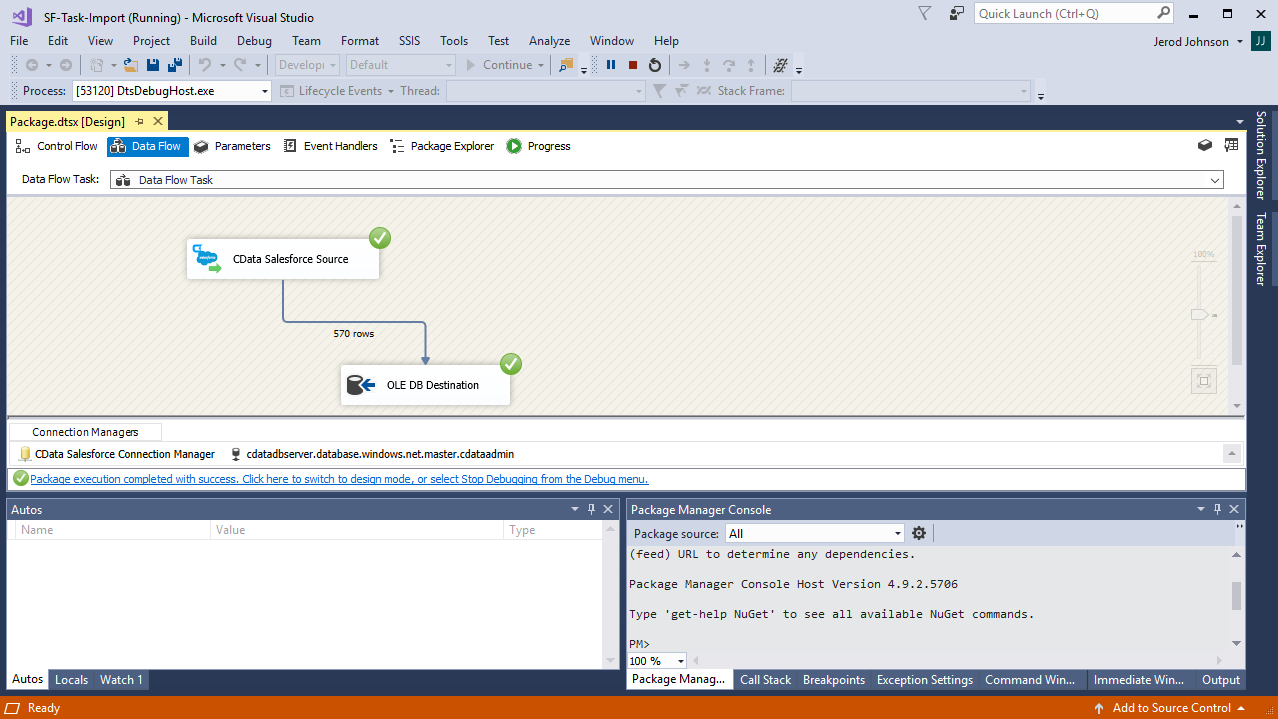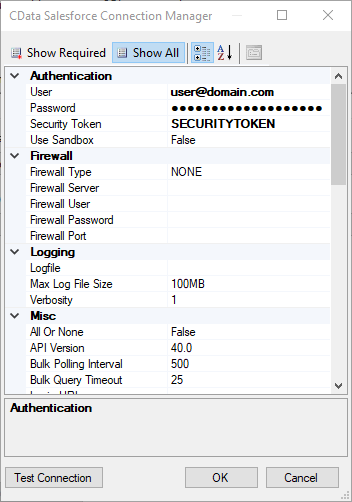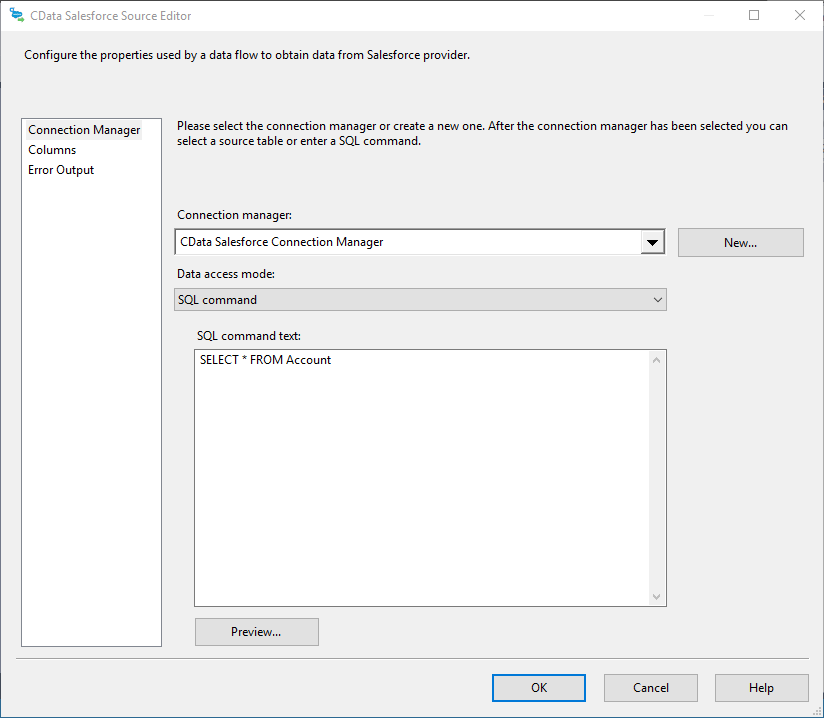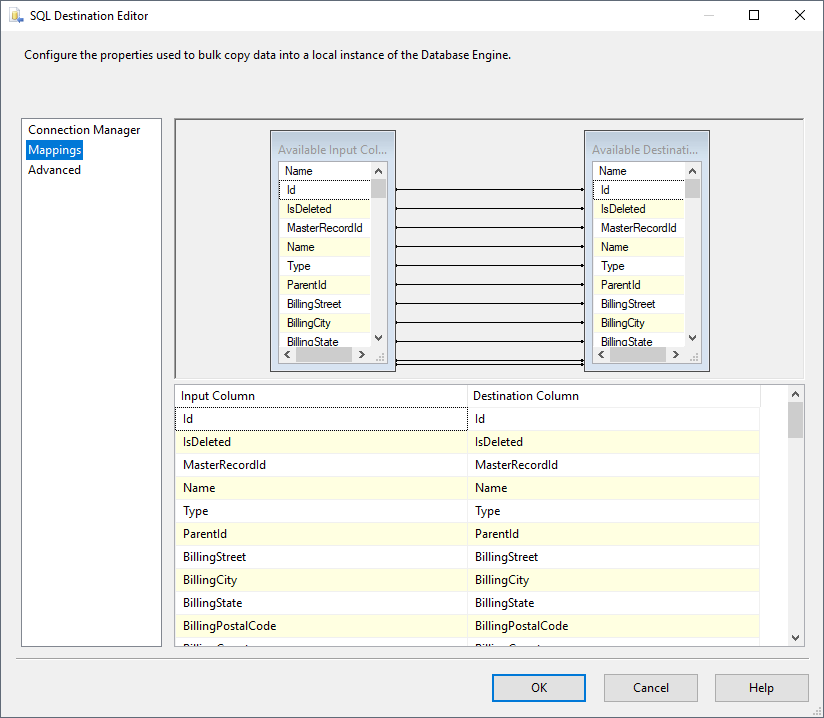Discover how a bimodal integration strategy can address the major data management challenges facing your organization today.
Get the Report →How to Import xBase Data into SQL Server using SSIS
Easily back up xBase data to SQL Server using the SSIS components for xBase.
Using SQL Server as a backup for critical business data provides an essential safety net against loss. Backing up data to SQL Server enables business users to more easily connect that data with features like reporting, analytics, and more.
This example demonstrates how to use the CData SSIS Tasks for xBase inside of a SQL Server SSIS workflow to transfer xBase data into a Microsoft SQL Server database.
Add the Components
To get started, add a new xBase source and SQL Server ADO.NET destination to a new data flow task.
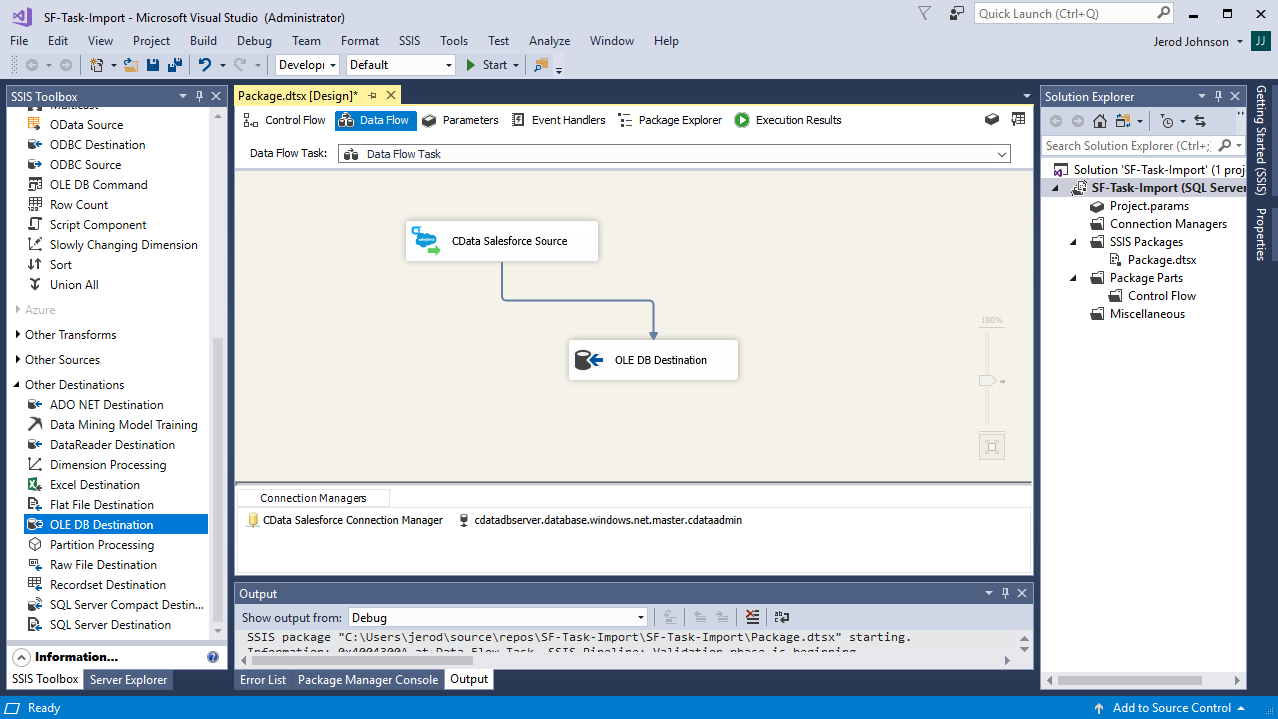
Create a New Connection Manager
Follow the steps below to save xBase connection properties in a connection manager.
- In the Connection Manager window, right-click and then click New Connection. The Add SSIS Connection Manager dialog is displayed.
- In the Connection Manager type menu, select xBase. The CData xBase Connection Manager is displayed.
- Configure connection properties.
The DataSource property must be set to the name of the folder that contains the .dbf files. Specify the IncludeFiles property to work with xBase table files having extensions that differ from .dbf. Specify multiple extensions in a comma-separated list.
![Configuring a connection (Salesforce is shown).]()
Configure the xBase Source
Follow the steps below to specify the query to be used to extract xBase data.
- Double-click the xBase source to open the source component editor.
- In the Connection Manager menu, select the connection manager previously created.
- Specify the query to use for the data extraction. For example:
SELECT Company, SUM(Total) FROM Invoices GROUP BY ContactName![The SQL query to retrieve records. (Salesforce is shown.)]()
- Close the xBase Source control and connect it to the ADO.NET Destination.
Configure the SQL Server Destination
Follow the steps below to specify the SQL server table to load the xBase data into.
- Open the ADO.NET Destination and add a New Connection. Enter your server and database information here.
- In the Data access mode menu, select "table or view".
- In the Table Or View menu, select the table or view to populate.
- Configure any properties you wish to on the Mappings screen.
![The mappings from the SSIS source component to SQL Server. (Salesforce is shown.)]()
Run the Project
You can now run the project. After the SSIS Task has finished executing, your database will be populated with xBase data.
